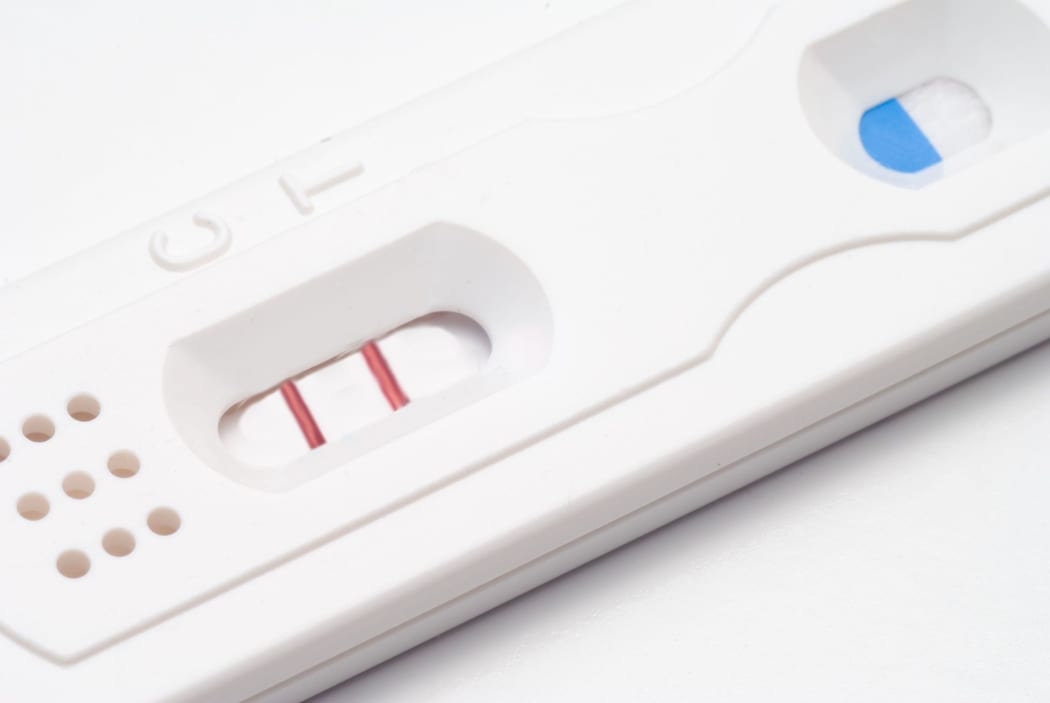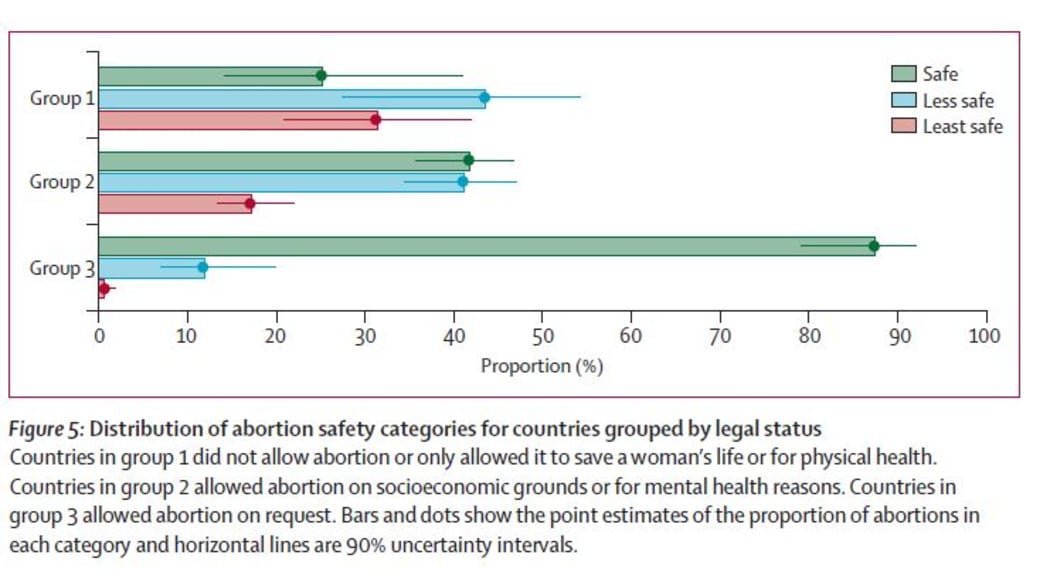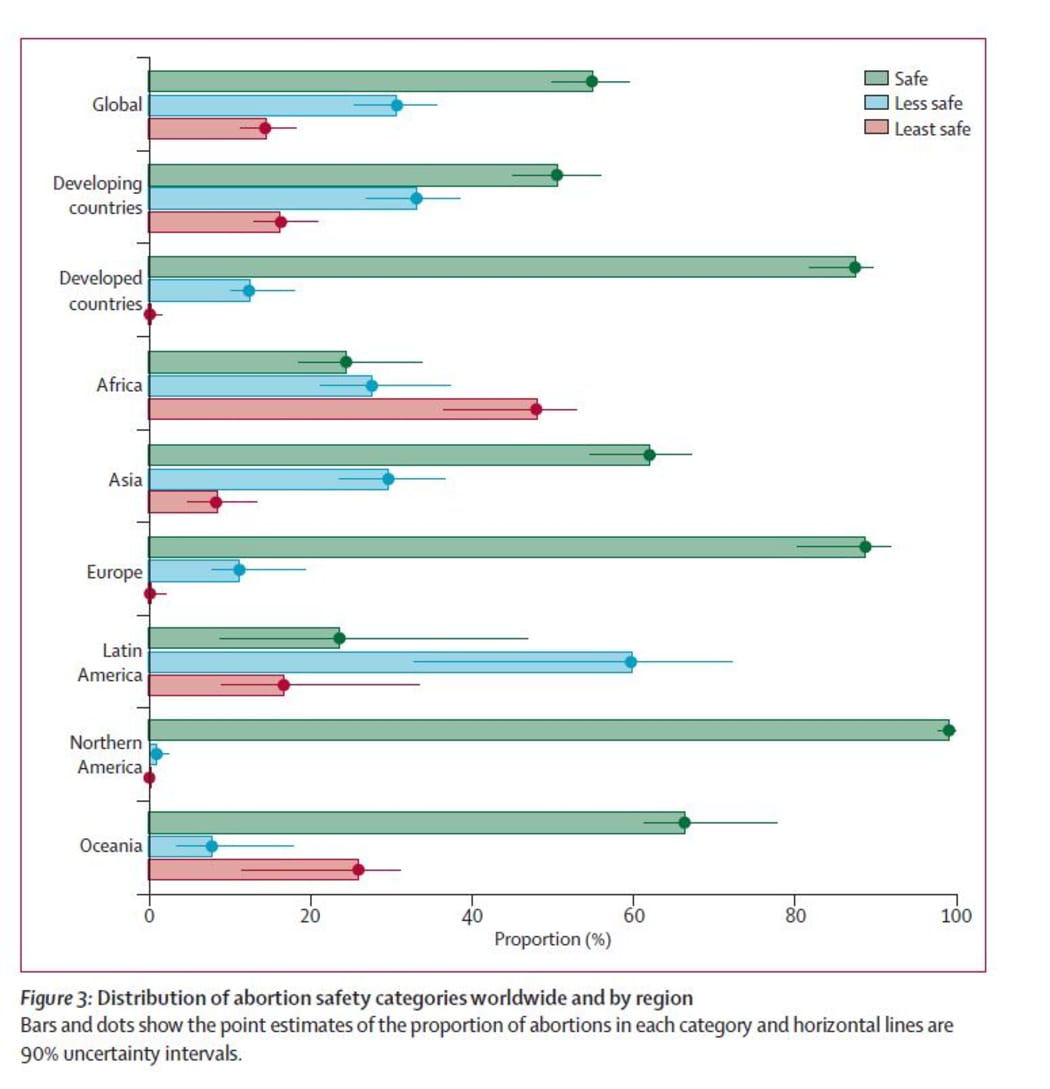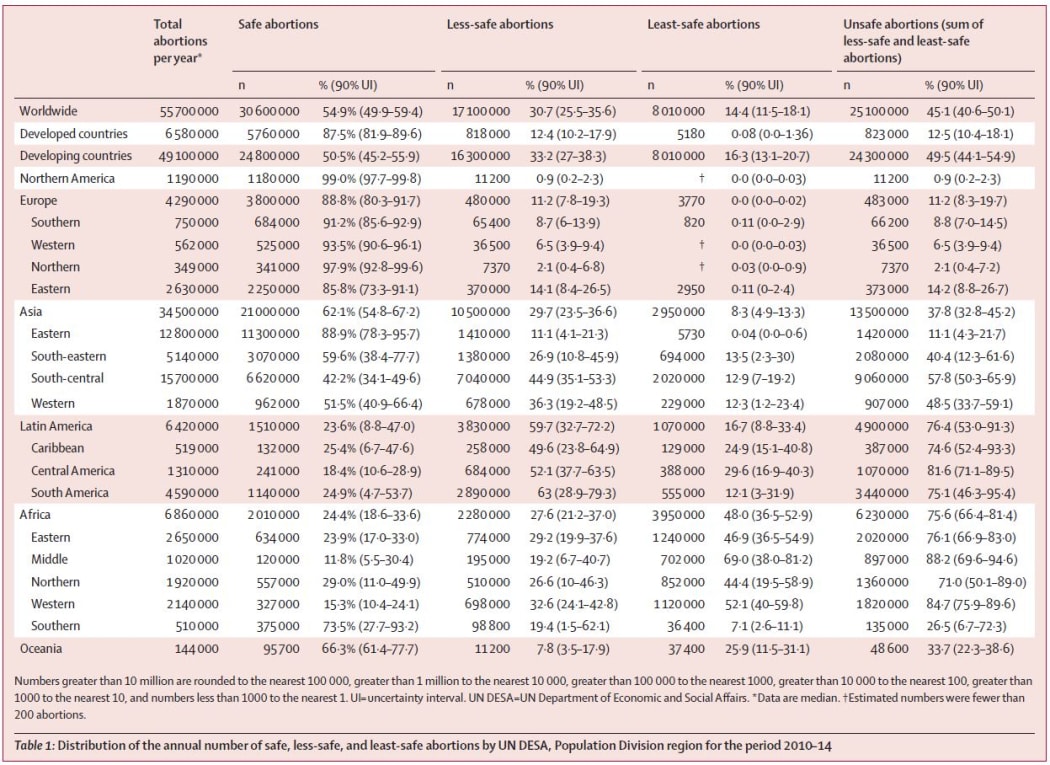Safe abortion rates are highest in countries where the service is available on demand.

Photo: 123rf
Countries where abortion laws are restrictive are more likely to see a higher rate of unsafe terminations, a study has found.
Of the 55.7 million abortions that occurred worldwide each year between 2010 and 2014, 25.1 million each year were unsafe, with 24.3 million of these occurring in developing countries.
When grouped by the legal status of abortion, the proportion of unsafe abortions was significantly higher in countries with highly restrictive abortion laws than in those with less restrictive laws.
In New Zealand, where abortion is classified as a crime with exceptions for health and mental health, foetal abnormality and incest, the rate of safe abortions is 96 percent.
In Australia, where abortion laws differ between states (in Queensland and New South Wales it is a crime with some exceptions, while in Victoria it is available up to 24 weeks), the rate of safe abortions is 91 percent.
“The highest proportions of safe abortions were seen in developed countries with less restrictive laws, suggesting that both the legal grounds and overall development of a country have a part in abortion safety,” the study’s authors wrote.

Photo: Source: The Lancet
In the United Kingdom (with the exception of Northern Ireland), where abortion is legal up to 24 weeks, study found a 100% rate of safe abortions. The rate was also 100% in Finland, France, Iceland, Israel, Netherlands, Norway and Switzerland where abortion laws are less restrictive.
The findings, published in The Lancet, come from a study led by the World Health Organisation (WHO) and the Guttmacher Institute, and highlight the need to ensure safe access to abortion to the full extent of the law, particularly in low income countries, as well as the need to replace the use of unsafe methods with safe methods of abortion.
WHO defines unsafe abortion as a procedure for termination of a pregnancy done by an untrained person or in an environment not conforming to minimal medical standards.
In the last 25 years, technologies like manual vacuum aspiration and medical abortion (using drugs mifepristone and/or misoprostol), have made the provision of safe abortions possible at the primary care level and by health workers other than doctors in countries that allow it, the study found.
The study found that conditions leading to a safe abortion are in turn affected by numerous factors, including laws and policies on abortion, socioeconomic conditions, the availability of safe abortion services, and the stigma surrounding abortion.
Stigma related to seeking or provision of abortion is increasingly being recognised as having an effect on how and where women access care and who provides care.
Given that the number of abortions in the subregions of Micronesia, Polynesia, and Melanesia were small, the study did not separate Oceania into its subregions.
Thus, the results for the region reflected a mix of safety scenarios. When Australia and New Zealand were considered separate to countries like Vanuatu and Papua New Guinea, 92.3 percent of abortions were safe, similar to the pattern in other developed regions.
According to the Centre for Reproductive Rights abortion law world map, abortion in Vanuatu is allowed “to preserve health,” while in Papua New Guinea it is only permitted to save a woman’s life.
The study found that in Vanuatu the proportion of ‘minimum least safe’ abortions was 0.51, while in Papua New Guinea the proportion of ‘maximum least safe’ was 0.50.

Photo: Source: The Lancet
Abortion Law Reform Association of New Zealand (ALRANZ) president Terry Bellamak says legality drives accessibility, and accessibility drives safety.
“In New Zealand, that equation goes a bit askew, because the law does not reflect the practice - 98 percent of abortions are approved on the mental health ground. Accessibility has run ahead of the law.”
Bellamak says the system in New Zealand, therefore, ends up being a patchwork of good qualities and bad ones.
“The health system pays for abortions, which is good, but it also denies people abortions that are apparently legal, like Kate's.”
Bellamak says the law governing abortion in New Zealand - the Crimes Act 1961 - is so old it does not account for changes in medical practice like medical abortions.
“Thus there is low uptake of medical abortion here. The fact that abortion is still a crime certainly increases the stigma surrounding abortion, but that has been lifting in recent years.”
The study analysed data from 182 countries and regions but excluded countries with populations below 100,000.
Authors classified abortions as safe if they were done with a method recommended by WHO (medical abortion, vacuum aspiration, or dilatation and evacuation) that was “appropriate to the pregnancy duration and if the person providing the abortion was trained.”
Abortions were classified as less safe if only one of the two criteria were met - that is either the abortion was done by a trained provider but with an outdated method (sharp curettage, for example), or a safe method of abortion was used but without adequate information or support from a trained individual.
Authors classified abortions as least safe if they were provided by untrained people using dangerous methods like as ingestion of “caustic substances, insertion of foreign bodies, or use of traditional concoctions.”

Photo: Source: The Lancet


